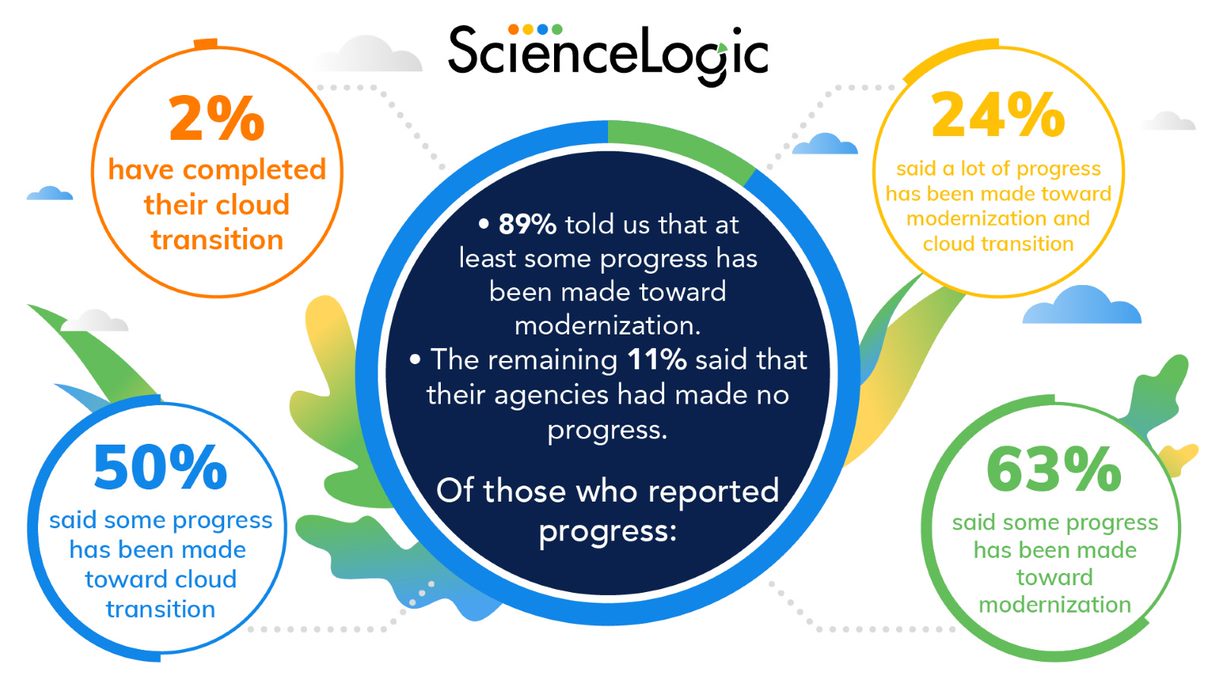Goals of Modernizing Government Technology
When the U.S. Congress passed the Modernizing Government Technology Act (MGT) of 2017 as part of the 2018 National Defense Authorization Act, it established both funding and a process intended to help bring aging federal IT systems and infrastructure up-to-date with state-of-the-art technologies common in the private sector. According to the legislation, the goals of MGT are to:
- Improve, retire, or replace existing information technology systems to enhance cybersecurity and to improve efficiency and effectiveness;
- Transition legacy information technology systems to cloud computing and other innovative platforms and technologies;
- Assist and support efforts to provide adequate, risk-based, and cost-effective information technology capabilities that address evolving threats to information security; and,
- Reimburse amounts transferred to the agency from the Technology Modernization Fund (TMF), with the approval of such agency’s Chief Information Officer.
The total federal IT budget for civilian agencies for the 2022 fiscal year is $58.4 billion, not including $1 billion allocated for the TMF to support the programs intended to meet the goals of MGT. Agencies can apply for loans, drawn from the TMF, for investments in new systems and technologies, as well as associated integrations. Agencies receiving TMF loans are expected to pay them back, ostensibly from cost savings realized through modernization.
An Update on Ambitious Plans
The U.S. government’s ambitious plan is not unlike any private sector technology transformation in that the investments are intended to give agencies additional ways to deliver services more quickly, better secure sensitive systems and data, and use taxpayer dollars more efficiently. And that will, in turn, enable them to deliver a higher quality of service to the constituents they serve. That’s a worthy ambition, and one that has strong bipartisan support. And so, it follows that a common question we hear discussed when working with our customers and partners in the federal sector is: how is the modernization effort progressing?
ScienceLogic wanted to know, too, and so we commissioned a study of IT leaders in federal government, conducted by the Government Business Council, to get answers. The resulting report, “AI Operations-enabled Monitoring: Assessing Agency IT Modernization Challenges, Priorities, and Progress,” exposes sentiments and perceptions among federal employees regarding their agency’s IT modernization pain points, priorities, and progress. The report’s findings are interesting and revealing.
What We Learned
Unsurprisingly, we learned that IT modernization in the federal sector is a work in progress. Of those polled, 89% told us that at least some progress has been made toward modernization, while the remaining 11% said that their agencies had made no progress, or that they were unsure if any modernization gains have been made. Of those who reported progress:
- 2% have completed their cloud transition;
- 24% said a lot of progress has been made toward modernization and cloud transition;
- 50% said some progress has been made toward cloud transition; and,
- 63% said some progress has been made toward modernization.

As federal agencies make progress on their journey to IT modernization, it helps to understand what outcomes take precedence. The top three priorities listed most often by the IT leaders surveyed are consistent with MGT’s goals, and in-line with expectations of any IT transformation project. Specifically, improved cybersecurity (24%), improved efficiency (20%), and optimized service delivery (13%) were the top goals, followed by things like cost reduction, improved collaboration, and greater technical agility.
Priorities, Obstacles, and Risks
As for IT operations initiatives being established to achieve modernization goals, respondents said that their agencies’ high or critical priorities were to:
- Decrease service disruptions (58%);
- Upgrade/modernize business applications and systems (48%);
- Increase use of automation (44%);
- Increase IT visibility across tools and resources (39%); and,
- Increase use of analytics and machine learning (33%).
Interestingly, when asked about the biggest obstacles to modernization—and the consequences of failure—security risks proved to be top-of-mind. This suggests that the May 12, 2021 “Executive Order on Improving the Nation’s Cybersecurity,” and its emphasis on implementing “zero trust architecture” within the federal government’s IT systems, is having an influence on the direction of modernization’s implementation at the agency level. The top three obstacles to modernization cited by IT leaders were security risks (64%), high costs (53%), and difficulty integrating and maintaining legacy tools (49%). The top consequences of failure were identified as security risks (58%), a poor employee experience (56%), and the costs required for support (52%).
The Role and Value of AIOps
Success at achieving any IT modernization endeavor, technology transformation, or cloud migration starts with the establishment of a strong technology platform that can support both legacy systems and new technology investments, ensure secure transfer and storage of sensitive data between systems, and drive efficiencies through advanced analytics and intelligent workflow automation. Artificial intelligence for IT operations (AIOps) solutions have proven to be a powerful technology for private sector organizations and are growing in popularity within government agencies as well. For example, The ScienceLogic SL1 platform is the AIOps platform of choice for the Department of Veteran Affairs—the largest civilian agency in the U.S. federal government—and many other federal agencies as well.
While 15% of respondents say their agency has already implemented an AIOps-enabled monitoring solution, 45% say their agency is interested, and 21% say their agency plans to implement in the next 12 months. That bodes well for the success of IT modernization plans, as well as the ability of federal agencies that have adopted AIOps to keep their systems current as new technologies and services are adopted or become available. As for why those agencies have adopted AIOps (or plan to), the features most valued were:
Similarly, the biggest business benefits agencies expect to gain from AIOps adoption were increased operational efficiency (63%), increased employee productivity (60%), and improved customer experience (57%). The biggest technical benefits they expect are complete, accurate data to drive automation and solve problems faster (57%), quicker response times to identify root causes (MTT) to incidents (54%); and the ability to understand service impact and prioritize tasks (51%).
Secure by Design
With cyber-attacks on the rise in frequency, sophistication, and the extent of damage that can be inflicted on an organization’s operations, establishing a secure foundation should be top of mind—wherever you are on your IT modernization/AIOps journey. ScienceLogic has a long history or employing security best practices, employing a multi-pronged approach to securing our solutions—including customer data.
Whether it is with the Department of Veterans Affairs or agencies within the Department of Defense that have already chosen SL1, or any of the hundreds of other federal agencies that are working to build, modernize, and maintain their IT systems and infrastructure, AIOps is a proven strategy for reining in the complexity of sprawling enterprises and delivering improved operational efficiency, while promoting cybersecurity.
Read the full report “AI Operations-enabled Monitoring: Assessing Agency IT Modernization Challenges, Priorities, and Progress.”
 See ScienceLogic in actionTake a Tour
See ScienceLogic in actionTake a Tour Take Skylar One for a SpinStart Your Test Drive
Take Skylar One for a SpinStart Your Test Drive The Gartner® Magic Quadrant™ for Observability PlatformsRead the Report
The Gartner® Magic Quadrant™ for Observability PlatformsRead the Report The Forrester Wave™: AIOps Platforms, Q2 2025Access the Report
The Forrester Wave™: AIOps Platforms, Q2 2025Access the Report Future-Ready IT: Secure Migration, Faster Value, and Smarter OperationsWatch Now
Future-Ready IT: Secure Migration, Faster Value, and Smarter OperationsWatch Now

